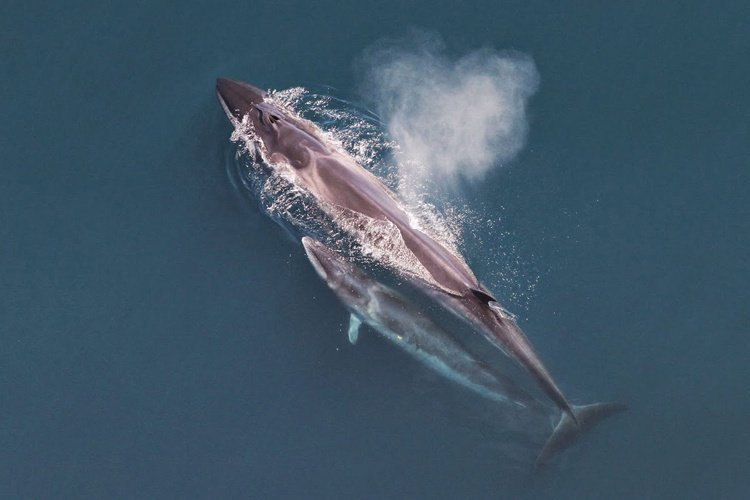Current project
Labrador Sea Baleen Project
Previously assessed as data-deficient, the Atlantic Sei whale population in Canada was designated as Endangered in 2019 by the Committee on the Status of Endangered Wildlife in Canada.
However, this population is not currently listed as endangered under the Canadian Federal Species at Risk Act despite a suspected low population size and threats to recovery from human activity.
Only a few hundred individuals or less are estimated to occur off eastern Canada and are exposed to underwater noise, ship strike and entanglement; the latter two believed to be the primary causes of mortality.
This project seeks to evaluate the importance of the southern Labrador Sea to Sei whales and improve our understanding of their biology and ecology.
We will conduct a two-year pilot study to assess the feasibility of vessel-based surveys to collect data on Sei whales off southern Labrador. This area has received little survey attention, despite regular acoustic detections in summer and fall during a two-year acoustic monitoring program off eastern Canada. Two research expeditions are currently planned for the summers of 2023 and 2024 aboard a sailing vessel to investigate Sei whale occurrence and habitat use in the southern Labrador Sea.
Methods
-
Document the distribution and abundance of sei whales, in addition to other large whales, in the Labrador Sea, to assess the existence of potential hotspots of whale aggregation, and to explore potential geographical overlap between whales and human activities
-
Provide data for abundance estimates and inter-annual frequentation. Will be used to investigate movement patterns between different regions
-
Documentation and quantification of the prevalence of entanglement and ship strike as a threat (via scar analysis). Measurements for baseline morphology estimates, as well as assessment of body condition
-
Will be used for genetics analysis to better understand genetic variability and population structure. Will be used to assess diet using stable isotopes and fatty acid signatures
-
Non-invasive method to collect genetic material of targeted individuals. Will increase knowledge on distribution of sei whales by providing presence/absence data
-
Will help identify areas occupied by Sei whales particularly when visual detection is not possible
-
CTD casts will help characterize physical parameters of habitats used by Sei whales
Research vessel
Sailing vessel Andromède
41-foot steel ketch
Designed by architect Paul Fleury, inspired by Moitessier’s famous Joshua
Launched in Quebec in 1987
Uses solar and wind-generated power
An understanding of Sei whale natural history, ecology, population structure and habitat requirements in Canada is currently lacking.
This information is crucial for supporting conservation efforts and management of this under-studied species, particularly in a rapidly changing environment under increasing pressure from human activity offshore.





































